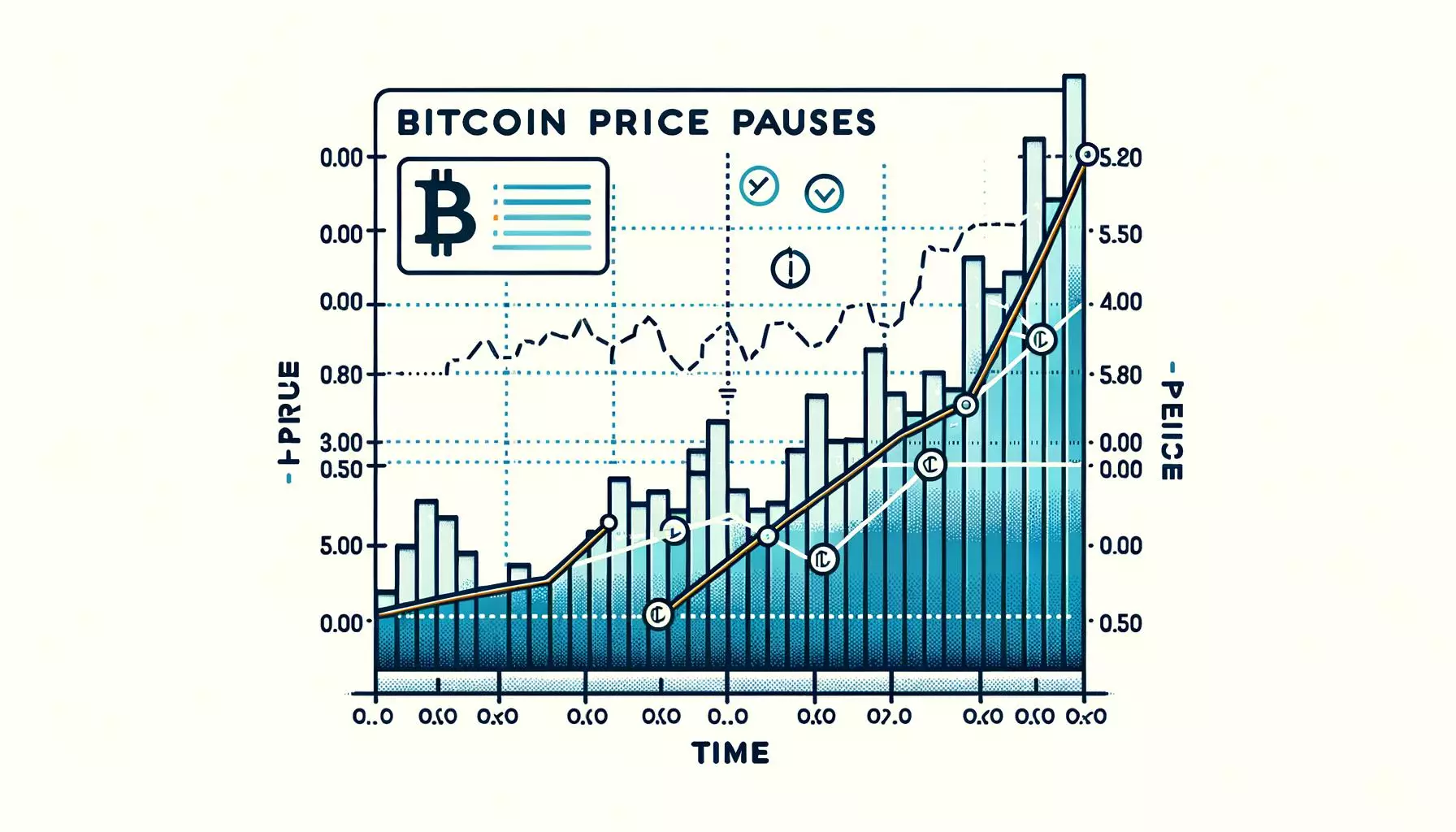Bitcoin, the foremost cryptocurrency, continues to exhibit noteworthy fluctuations that intrigue both traders and investors. Recent market behavior demonstrates a transition from upward momentum to a significant downside correction, raising critical questions on its future trajectory. This article delves into the latest price patterns of Bitcoin, highlighting key support and resistance levels that will shape its movement in the coming days.
After making a commendable attempt to breach the $70,000 resistance, Bitcoin’s price faced significant challenges. The struggle to sustain a bullish trend has manifested in a downward correction, with trading hovering beneath $67,500 and the crucial 100-hour simple moving average. Such technical indicators suggest that Bitcoin is in a precarious position, as a decline towards the $66,500 zone has already occurred, signaling a need for buyers to strengthen their hold if a sustainable recovery is to be expected.
Market participants keenly observe that Bitcoin formed a low at approximately $66,564 and has since been consolidating losses. The brief uptick beyond the $66,850 mark may provide a glimmer of hope; however, it must be acknowledged that this minor increase appears insufficient to ignite a substantial upwards reversal.
A critical analysis of the hourly BTC/USD chart indicates the presence of a contracting triangle, with support firmly established at around $67,100—a level which will be paramount in the days to come. If the price continues to trend below this support threshold, further declines are plausible. Nevertheless, should Bitcoin manage to reclaim this level, it could trigger a crucial upward momentum, potentially propelling its price toward the significant $68,000 resistance zone.
Moreover, looking ahead, the Fibonacci retracement levels reveal that the 50% mark aligns closely with the $68,000 resistance. A decisive move above this threshold could establish a new bullish narrative, accelerating Bitcoin’s price towards the $68,500 level and possibly onto the psychological $70,000 barrier. However, each upward move will necessitate sustained trading volumes to confirm an actual trend reversal.
The market is rife with speculation about Bitcoin’s next steps, and analysts caution against underestimating the potential for further declines. If Bitcoin fails to surmount the $67,100 resistance, the outlook appears bleak. Immediate support levels sit at $66,800, and another decline could breach the $66,500 cushion, exposing traders to even lower targets at $66,200 and possibly $65,500.
Considering the prevailing technical indicators—such as the MACD, which shows slumping momentum in the bearish zone, and the RSI trending below the neutral 50 mark—sentiment remains cautious. Sellers have the upper hand, and unless a decisive reversal is executed convincingly, Bitcoin may find itself navigating through turbulence in the short term.
The present technical indicators reflect a market sentiment that is uncertain and wary. Currently, Bitcoin’s performance is influenced not just by technical analysis but also by broader market dynamics—including investor sentiment, regulatory developments, and macroeconomic factors. While the consolidation phase indicates a possible accumulation of strength, any abrupt changes in external factors could unravel the tenuous support levels established.
Bitcoin’s ability to weather the current storm hinges on maintaining crucial support levels while pushing back against immediate resistances. Traders should remain vigilant, keeping a close eye on market trends and chart patterns as they unfold, as the potential for both upward and downward movements remains prevalent. As history has shown, Bitcoin is notorious for swift price shifts, and thus, a strategic approach based on comprehensive market analysis is essential for navigating this volatile landscape.

